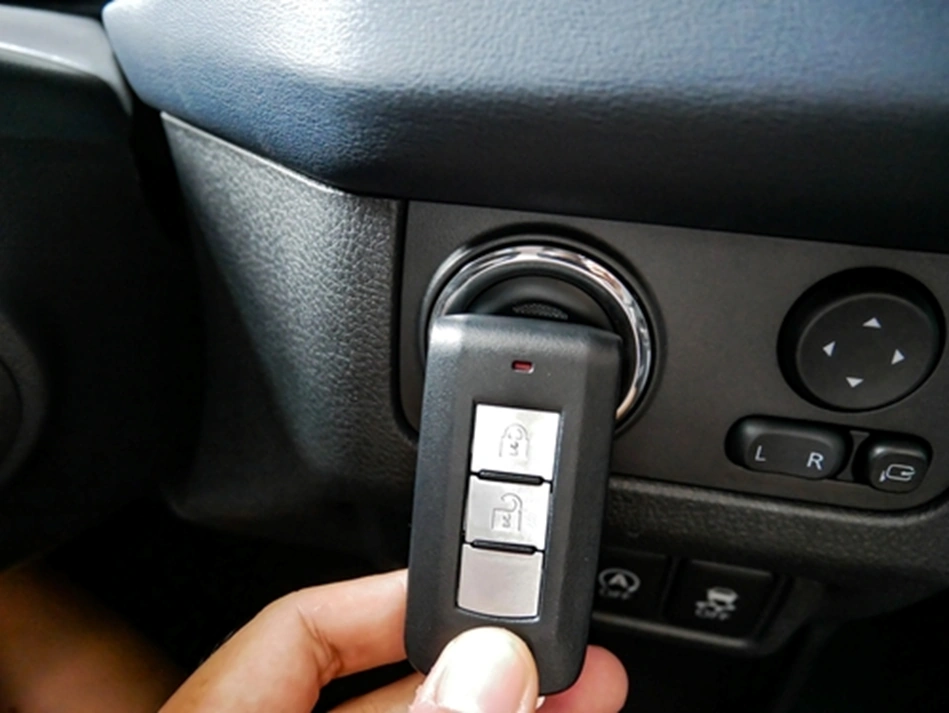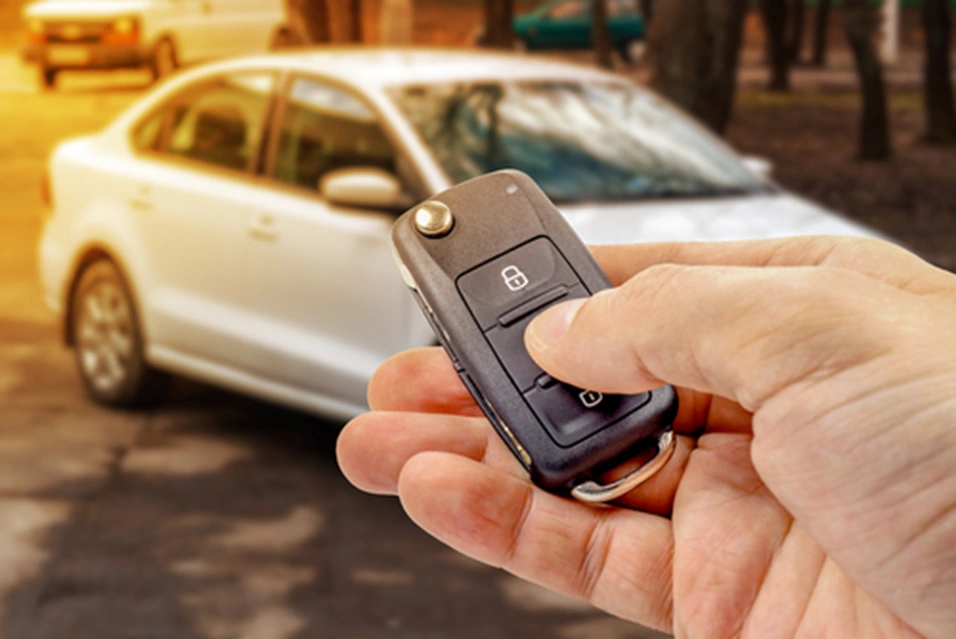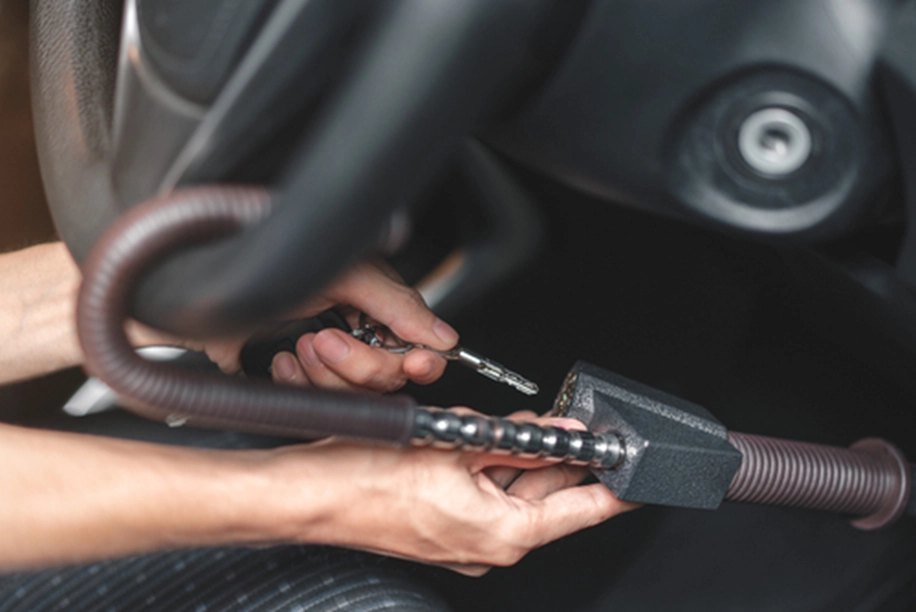What Is Thatcham And How Does It Impact Vehicle Security?
When it comes to securing your car, not all devices are created equal. Some systems offer basic deterrents, while others provide advanced protection and insurance benefits. Let’s explore what is a Thatcham device, the role of Thatcham Research, and why its approval is trusted across the industry.

The Role Of Thatcham Research In Car Safety
Thatcham Research has been shaping vehicle security and safety standards in the UK for over 50 years. Originally founded by the insurance industry, it aimed to tackle rising theft rates and expensive repair costs. Today, it is widely regarded as the gold standard for security certification and vehicle safety testing.
Insurers depend heavily on Thatcham ratings when calculating insurance premiums. Vehicles fitted with approved security devices, like Thatcham devices, often benefit from lower costs. This is because these certified products reduce theft risks and the likelihood of claims being made.
Thatcham’s influence goes beyond just security device testing. It also plays a key role in crash testing vehicles to meet strict Euro NCAP standards. This ensures that cars on the road are not only harder to steal but also safer to drive and better at protecting occupants.
What Qualifies As A Thatcham-approved Device?
A Thatcham-approved device is not actually manufactured by Thatcham itself. Instead, it refers to a security product that has been independently tested and certified by Thatcham Research. These devices include alarms, immobilisers, and tracking systems designed to protect vehicles from theft.
To earn this approval, a device must pass strict tests that assess durability, tamper resistance, and overall effectiveness. Once certified, these products are widely recognised within the insurance and motor industries. Their trusted status often helps vehicle owners benefit from improved security and lower premiums.
If you’ve been wondering “what is a Thatcham device,” the answer is straightforward. It is a tested and trusted security product that meets high industry standards for theft prevention. Installing one provides valuable peace of mind and may help reduce insurance costs for your vehicle.
How Crash Testing And Safety Grading Works At Thatcham
Thatcham is renowned not only for security testing but also for its world-class crash testing lab. Vehicles are subjected to demanding scenarios to assess how they perform in real-world collisions. These tests include frontal impacts, side crashes, and pole collisions to cover a range of accident types.
The data gathered from these tests plays a crucial role in car design and repair guidance. Manufacturers use Thatcham’s insights to make vehicles safer, easier, and more cost-effective to repair. This benefits drivers by reducing the chances of serious injuries and keeping insurance claims lower.
Beyond physical crash tests, Thatcham also evaluates modern driver assistance technologies. This includes safety features like lane keep assist, emergency braking, and adaptive cruise control. By testing these systems, Thatcham helps ensure new tech genuinely improves driver safety and prevents accidents.
Breakdown Of Thatcham Security Categories
Thatcham security categories help you easily compare different types of devices. Each category reflects the type and level of protection offered for your vehicle. Understanding them makes choosing the right Thatcham device much simpler.
Some categories are designed to stop theft entirely before it happens. Others help track and recover vehicles after they are stolen. Picking the right device depends on your car, lifestyle, and personal security needs.
Category 1: Combined Alarm And Immobiliser
Category 1 offers the highest level of security available. These devices combine a sophisticated alarm with an electronic immobiliser. Together, they protect your car before and after thieves try to access it.
Alarms typically include perimeter detection, tilt sensors, and self-powered sirens. Immobilisers stop the engine from starting by isolating vital circuits when the key is removed. This combination makes Category 1 systems highly effective and insurance friendly.
Many new cars come with Category 1 systems already installed. They provide excellent protection without needing extra upgrades. Still, it’s smart to double-check if your car qualifies.
Category 2: Electronic Immobiliser
Category 2 devices focus solely on immobilisation without including an alarm. These systems prevent the engine from starting unless the correct key or fob is used, stopping thieves in their tracks. If you’re wondering what is a Thatcham approved cat 2 alarm, it refers to an immobiliser certified by Thatcham that meets strict standards for preventing unauthorised engine starts.
Like Category 1 systems, they activate automatically when the ignition is turned off. However, they do not detect or deter unauthorised entry, which means adding an alarm boosts security. Pairing a Cat 2 immobiliser with a proper alarm turns it into a Category 2/1 setup, which offers more complete protection.
Most UK vehicles built after 1998 are fitted with Category 2 immobilisers as standard. These systems meet legal requirements and can reduce insurance costs. If your car is older or imported, upgrading to an approved device is highly recommended.
Category 2/1: Alarm Upgrade Systems
Category 2/1 systems begin with a Category 2 immobiliser and upgrade it with a Thatcham-approved alarm. This combination provides a similar level of protection to Category 1 systems. It’s a smart and affordable way to enhance vehicle security.
The added alarm must meet Thatcham’s strict criteria. Features typically include interior sensors and sirens with backup power. Together, they create a well-rounded and insurer-friendly security system.
Owners of cars without factory-fitted alarms often choose this option. It boosts peace of mind and makes vehicles more attractive to insurers. Upgrading helps you stay secure while potentially reducing insurance costs.
Category 3: Mechanical Immobilisers
Mechanical immobilisers offer basic yet effective protection. These include steering wheel locks, gear lever locks, and pedal clamps. Their physical presence stops thieves from easily driving away.
Visible deterrents like these often make criminals move on to easier targets. They are quick and easy to install, making them a popular choice for daily use. Combining them with electronic security offers even stronger protection.
Tradespeople and van owners frequently use these devices. They add extra security when vehicles are left unattended overnight or on-site. Mechanical immobilisers are a simple but smart addition to any security plan.
Category 4: Wheel Locking Devices
Category 4 devices focus on stopping wheel theft. Locking wheel nuts are the most common example and require a special key to remove. These are especially useful for vehicles with expensive alloy wheels.
While simple, they are highly effective against opportunistic thieves. Most new cars include them as standard, but aftermarket versions can be added too. Always keep the removal key in a safe and separate place.
Pairing wheel locks with other security devices offers added protection. This makes it harder for thieves to strip valuable parts from your car. It’s a small investment with big benefits.
Category S5: Post-theft Tracking Systems
S5 trackers offer the most advanced post-theft protection currently available. They feature live location tracking, driver recognition, and often remote immobilisation capabilities. This powerful combination makes them excellent tools for both preventing theft and recovering stolen vehicles quickly.
Without the correct ID fob or mobile authorisation, the car will not start, adding a strong first layer of protection. If the vehicle is stolen, remote immobilisation allows either you or a monitoring centre to safely stop it without risk. Police can then use the live data to rapidly locate and recover your car, increasing the chances of swift retrieval.
S5 systems are highly recommended for owners of high-value vehicles and commercial fleet operators. They offer peace of mind by dramatically reducing the chances of permanent loss. Many insurers also offer generous discounts for vehicles fitted with these top-tier security devices.
Category S7: Stolen Vehicle Tracking
S7 trackers offer reliable recovery help at a lower price point. They track vehicle location in real time but do not include driver recognition. This makes them a simpler alternative to S5 devices.
Despite fewer features, they are still very useful. Police can quickly access location data if your car is stolen. While they don’t stop theft directly, they improve recovery chances significantly.
S7 trackers are suitable for everyday drivers. They offer peace of mind without the higher cost of advanced systems. Insurers often recognise them for security-related discounts.
Q class: Non-standard Aftermarket Systems
Q class covers aftermarket devices that don’t fit into other categories. These might include extra locks, bespoke alarms, or vehicle marking systems. While varied, they still improve your car’s security.
Though not always recognised for insurance discounts, they offer extra layers of protection. They are often combined with other Thatcham devices to create comprehensive security plans. Always check compatibility and professional approval before installing.
Q class products are particularly useful for specialist or older vehicles. They help fill security gaps where traditional devices might not fit. While optional, they provide valuable added deterrence.
How To Know If Your Car Has A Thatcham System
Checking whether your car has a Thatcham-approved device is straightforward and worth doing. Start by reviewing your owner’s manual or speaking to your dealership directly. They should be able to confirm what factory-fitted security systems your vehicle includes.
Another easy way is to look for Thatcham certification labels on your security devices. These are often displayed on alarms, immobilisers, or trackers installed in your vehicle. You can also check your insurance documents or ask your provider, as they usually record this information.
If you discover that your vehicle does not have a Thatcham-approved device, don’t worry. Upgrading is simple and can significantly improve your car’s protection and potentially reduce your insurance premiums. A trusted professional installer or auto locksmith can help you choose the best security system for your needs.
FAQs
How do I know if my car has a Thatcham device?
Check your car’s manual, as it often lists security features including any Thatcham-approved systems. You can also contact the manufacturer or dealer to confirm if a Thatcham device is fitted. Insurers and professional installers may also help verify this for peace of mind.
What is a Thatcham device in a car?
A Thatcham device refers to a security product that has been tested and certified by Thatcham Research. This could include alarms, immobilisers, or trackers designed to prevent theft. Certification means the device meets strict standards and is trusted by insurers.
What is the difference between cat 1 and 2 Thatcham?
Category 1 offers the highest level of security with both alarm and immobiliser functions combined. Category 2 provides only an immobiliser, which still prevents the car from starting without authorisation. Both are passively set and offer excellent protection against theft.
Does a Thatcham alarm reduce insurance?
Yes, installing a Thatcham-approved alarm often makes your vehicle less attractive to thieves. As a result, many insurers may offer discounts or better premiums. However, it’s always a good idea to check with your insurance provider for specific savings.
Which Thatcham category is best?
Category 1 and Category S5 systems are considered the best for overall security and insurance benefits. These combine theft prevention with recovery options like alarms, immobilisers, and tracking. Your choice should depend on your vehicle type, location, and budget.
Share


